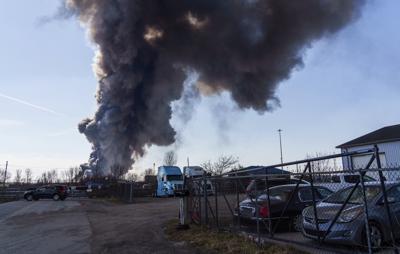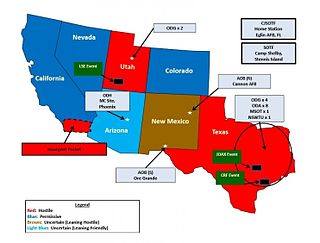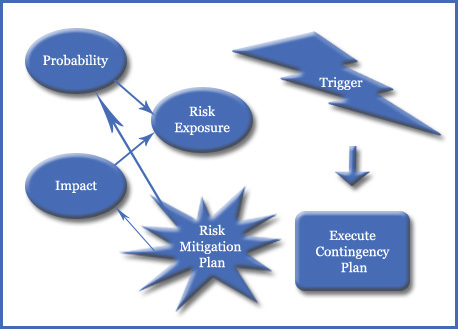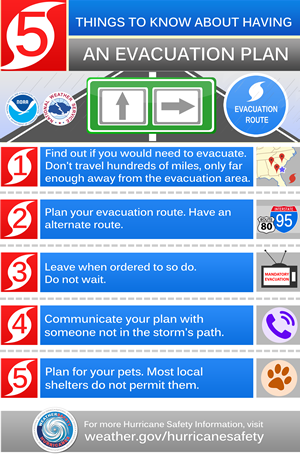COMINT or Special Intelligence (SI)
UMBRA (TSC?)
ENDSEAL (EL)
TALENT KEYHOLE (TK)
HUMINT Control System (HCS)
KLONDIKE (KDK, since 2011)
RESERVE (RSV, since 2005)
BYEMAN (BYE or B, defunct since 2005)
Special Navy Control Program (SNCP)
VERDANT (VER, defunct)
PANGRAM (PM, defunct)
MEDITATE (M, defunct)
SPECTRE
LOMA
KLAMATH (KLM)
CREDIBLE WOLF (CW)
FOCAL POINT (FP)
AZURE BLUE (AB)
EARPOP
? (GG)
? (CRU)
? (OC)
STELLARWIND (STLW, 2001-2009)
COMINT or Special Intelligence (SI)
UMBRA (TSC?)
ENDSEAL (EL)
TALENT KEYHOLE (TK)
HUMINT Control System (HCS)
KLONDIKE (KDK, since 2011)
RESERVE (RSV, since 2005)
BYEMAN (BYE or B, defunct since 2005)
Special Navy Control Program (SNCP)
VERDANT (VER, defunct)
PANGRAM (PM, defunct)
MEDITATE (M, defunct)
SPECTRE
LOMA
KLAMATH (KLM)
CREDIBLE WOLF (CW)
FOCAL POINT (FP)
AZURE BLUE (AB)
EARPOP
? (GG)
? (CRU)
? (OC)
STELLARWIND (STLW, 2001-2009)
ENDSEAL (EL)
TALENT KEYHOLE (TK)
HUMINT Control System (HCS)
KLONDIKE (KDK, since 2011)
RESERVE (RSV, since 2005)
BYEMAN (BYE or B, defunct since 2005)
Special Navy Control Program (SNCP)
VERDANT (VER, defunct)
PANGRAM (PM, defunct)
MEDITATE (M, defunct)
SPECTRE
LOMA
KLAMATH (KLM)
CREDIBLE WOLF (CW)
FOCAL POINT (FP)
AZURE BLUE (AB)
EARPOP
? (GG)
? (CRU)
? (OC)
STELLARWIND (STLW, 2001-2009)
HUMINT Control System (HCS)
KLONDIKE (KDK, since 2011)
RESERVE (RSV, since 2005)
BYEMAN (BYE or B, defunct since 2005)
Special Navy Control Program (SNCP)
VERDANT (VER, defunct)
PANGRAM (PM, defunct)
MEDITATE (M, defunct)
SPECTRE
LOMA
KLAMATH (KLM)
CREDIBLE WOLF (CW)
FOCAL POINT (FP)
AZURE BLUE (AB)
EARPOP
? (GG)
? (CRU)
? (OC)
STELLARWIND (STLW, 2001-2009)
RESERVE (RSV, since 2005)
BYEMAN (BYE or B, defunct since 2005)
Special Navy Control Program (SNCP)
VERDANT (VER, defunct)
PANGRAM (PM, defunct)
MEDITATE (M, defunct)
SPECTRE
LOMA
KLAMATH (KLM)
CREDIBLE WOLF (CW)
FOCAL POINT (FP)
AZURE BLUE (AB)
EARPOP
? (GG)
? (CRU)
? (OC)
STELLARWIND (STLW, 2001-2009)
Special Navy Control Program (SNCP)
VERDANT (VER, defunct)
PANGRAM (PM, defunct)
MEDITATE (M, defunct)
SPECTRE
LOMA
KLAMATH (KLM)
CREDIBLE WOLF (CW)
FOCAL POINT (FP)
AZURE BLUE (AB)
EARPOP
? (GG)
? (CRU)
? (OC)
STELLARWIND (STLW, 2001-2009)
PANGRAM (PM, defunct)
MEDITATE (M, defunct)
SPECTRE
LOMA
KLAMATH (KLM)
CREDIBLE WOLF (CW)
FOCAL POINT (FP)
AZURE BLUE (AB)
EARPOP
? (GG)
? (CRU)
? (OC)
STELLARWIND (STLW, 2001-2009)
SPECTRE
LOMA
KLAMATH (KLM)
CREDIBLE WOLF (CW)
FOCAL POINT (FP)
AZURE BLUE (AB)
EARPOP
? (GG)
? (CRU)
? (OC)
STELLARWIND (STLW, 2001-2009)
KLAMATH (KLM)
CREDIBLE WOLF (CW)
FOCAL POINT (FP)
AZURE BLUE (AB)
EARPOP
? (GG)
? (CRU)
? (OC)
STELLARWIND (STLW, 2001-2009)
FOCAL POINT (FP)
AZURE BLUE (AB)
EARPOP
? (GG)
? (CRU)
? (OC)
STELLARWIND (STLW, 2001-2009)
EARPOP
? (GG)
? (CRU)
? (OC)
STELLARWIND (STLW, 2001-2009)
? (CRU)
? (OC)
STELLARWIND (STLW, 2001-2009)
STELLARWIND (STLW, 2001-2009)
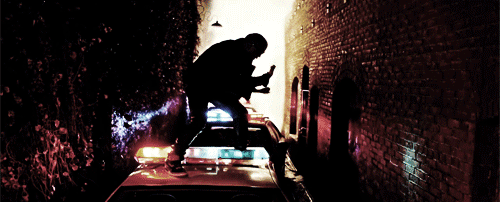
1981-1992: Cheney and Rumsfeld Practice Secret Continuity of Government Plan, Later Activated on 9/11
Edit event
Donald Rumsfeld and Dick Cheney, along with then-President Gerald Ford, April 28, 1975.Donald Rumsfeld and Dick Cheney, along with then-President Gerald Ford, April 28, 1975. [Source: David Hume Kennerly / Gerald R. Ford Library] (click image to enlarge)Throughout the 1980s, Dick Cheney and Donald Rumsfeld are key players in one of the most highly classified programs of the Reagan administration. Presently, Cheney is working as a Republican congressman, while Rumsfeld is head of the pharmaceutical company G. D. Searle. At least once per year, they both leave their day jobs for periods of three or four days. They head to Andrews Air Force Base, near Washington, DC, and along with 40 to 60 federal officials and one member of the Reagan Cabinet are taken to a remote location within the US, such as an underground bunker. While they are gone, none of their work colleagues, or even their wives, knows where they are. They are participating in detailed planning exercises for keeping government running during and after a nuclear war with the Soviet Union.
Unconstitutional 'Continuity of Government' - This highly secret “Continuity of Government†(COG) program is known as Project 908. The idea is that if the US were under a nuclear attack, three teams would be sent from Washington to separate locations around the US to prepare to take leadership of the country. If somehow one team was located and hit with a nuclear weapon, the second or third team could take its place. Each of the three teams includes representatives from the State Department, Defense Department, CIA, and various domestic-policy agencies. The program is run by a new government agency called the National Program Office. Based in the Washington area, it has a budget of hundreds of million dollars a year, which grows to $1 billion per year by the end of Reagan’s first term in office. Within the National Security Council, the “action officer†involved in the COG program is Oliver North, who is a key figure in the mid-1980s Iran-Contra scandal. Reagan’s Vice President, George H. W. Bush, also supervises some of the program’s efforts. As well as Cheney and Rumsfeld, other known figures involved in the COG exercises include Kenneth Duberstein, who serves for a time as President Reagan’s chief of staff, and future CIA Director James Woolsey. Another regular participant is Richard Clarke, who on 9/11 will be the White House chief of counterterrorism (see (1984-2004)). The program, though, is extraconstitutional, as it establishes a process for designating a new US president that is nowhere authorized in the US Constitution or federal law. After George H. W. Bush is elected president in 1988 and the effective end of the Soviet Union in 1989, the exercises continue. They will go on after Bill Clinton is elected president, but will then be based around the threat posed by terrorists, rather than the Soviet Union (see 1992-2000). According to journalist James Mann, the participation of Rumsfeld and Cheney in these exercises demonstrates a broader truth about them: “Over three decades, from the Ford administration onward, even when they were out of the executive branch of government, they were never too far away; they stayed in touch with its defense, military, and intelligence officials and were regularly called upon by those officials. Cheney and Rumsfeld were, in a sense, a part of the permanent, though hidden, national security apparatus of the United States.†[Mann, 2004, pp. 138-145; Atlantic Monthly, 3/2004; Washington Post, 4/7/2004; Cockburn, 2007, pp. 85]
No Role for Congress - According to one participant, “One of the awkward questions we faced was whether to reconstitute Congress after a nuclear attack. It was decided that no, it would be easier to operate without them.†Thus the decision is made to abandon the Constitutional framework of the nation’s government if this plan is ever activated. [Dubose and Bernstein, 2006, pp. 198]
Reactivated after 9/11 - The plan they rehearse for in the COG exercises will be activated, supposedly for the first time, in the hours during and after the 9/11 attacks (see (Between 9:45 a.m. and 9:56 a.m.) September 11, 2001). [Washington Post, 3/1/2002] Mann subsequently comments, “The program is of particular interest today because it helps to explain the thinking and behavior of the second Bush Administration in the hours, days, and months after the terrorist attacks on September 11, 2001.†[Atlantic Monthly, 3/2004]
Entity Tags: Richard A. Clarke, Richard (“Dickâ€) Cheney, Oliver North, National Program Office, James Woolsey, Kenneth Duberstein, Donald Rumsfeld, George Herbert Walker Bush
Timeline Tags: Complete 911 Timeline, 9/11 Timeline, Civil Liberties
Between 1981 and 1989: Officials Airborne in ‘Doomsday’ Plane for Three Days during Exercise
Edit event
An E-4B Airborne Command Post.An E-4B Airborne Command Post. [Source: US Air Force] (click image to enlarge)During the 1980s, top-secret exercises are regularly held, testing a program called Continuity of Government (COG) that would keep the federal government functioning during and after a nuclear war (see 1981-1992). The program includes a special plane called the National Emergency Airborne Command Post (NEACP). This is a modified Boeing 747, based at Andrews Air Force Base, near Washington, DC that has its own conference room and special communications gear. Nicknamed the “Doomsday†plane, it could act as an airborne command post from where a president could run the country during a nuclear war. One of the COG exercises run by the Reagan administration involves a team of officials actually staying aloft in the NEACP for three days straight. The team cruises across the US, and up and down the coasts, periodically being refueled in mid-air. [Schwartz, 1998; Mann, 2004, pp. 144] Dick Cheney and Donald Rumsfeld participate in the COG exercises, though whether they are aboard the NEACP in this particular one is unknown. [Atlantic Monthly, 3/2004] The plan that is being rehearsed for in the exercises will be activated in response to the 9/11 attacks (see (Between 9:45 a.m. and 9:56 a.m.) September 11, 2001). Also on 9/11, three Doomsday planes (then known as “National Airborne Operations Center†planes) will be in the air, due to an exercise taking place that morning called Global Guardian (see Before 9:00 a.m. September 11, 2001). [Schwartz, 1998; Omaha World-Herald, 2/27/2002]
Entity Tags: Donald Rumsfeld, Richard (“Dickâ€) Cheney
Timeline Tags: Complete 911 Timeline, 9/11 Timeline, Civil Liberties
(1984-2004): Richard Clarke Participates in Secret Continuity of Government Exercises
Edit event
Richard Clarke, who will be the counterterrorism “tsar†on 9/11, regularly participates in a series of highly secret “Continuity of Government†(COG) exercises. [Washington Post, 4/7/2004] Throughout the 1980s, the COG exercises rehearse how to keep the federal government running during and after a nuclear war with the Soviet Union (see 1981-1992). After the fall of the Soviet Union, the exercises continue, but based instead around a possible terrorist attack on the United States (see 1992-2000). [Atlantic Monthly, 3/2004] In 2004, Clarke will reveal that he has participated regularly in these exercises over the previous 20 years. He recalls that he had “gone off into caves in mountains in remote locations and spent days on end in miserable conditions, pretending that the rest of the world had blown up, and going through the questions, going through the drill.†He adds: “Everyone there play acts that it’s really happened. You can’t go outside because of the radioactivity. You can’t use the phones because they’re not connected to anything.†He also describes the COG plan requiring coded communications, saying: “There’s an elaborate system for the people in this network, first of all, to verify each other’s identity. That person on the other end has a certain password and information that they have to pass for us to believe that they’re who they say they are.†[Washington Post, 4/7/2004; ABC News, 4/25/2004] Clarke was a senior analyst at the State Department since 1979, and rises to prominence during the Reagan administration when he becomes deputy assistant secretary of state for intelligence. [Washington Post, 3/13/2003; BBC, 3/22/2004] After being a member of the National Security Council since 1992, in 1998 he is appointed as counterterrorism “tsar†(see May 22, 1998). [9/11 Commission, 3/24/2004 pdf file; New York Review of Books, 5/13/2004; Independent, 6/14/2004] According to journalist James Mann, the COG program is of particular interest because it helps explain the thinking and behavior of the Bush administration “in the hours, days, and months after the terrorist attacks on September 11, 2001.†[Atlantic Monthly, 3/2004] On the morning of 9/11, Clarke is in fact responsible for activating the COG plan, the first time it is ever implemented (see (Between 9:45 a.m. and 9:56 a.m.) September 11, 2001). [Clarke, 2004, pp. 8; ABC News, 4/25/2004] Also participating in the COG exercises, at least throughout at 1980s, are Dick Cheney and Donald Rumsfeld, who on 9/11 are the vice president and secretary of defense, respectively. [Atlantic Monthly, 3/2004]
Entity Tags: Richard A. Clarke
Timeline Tags: Complete 911 Timeline, 9/11 Timeline
1992-2000: Secret Continuity of Government Exercises Prepare for Terrorist Threat
Edit event
During the 1980s, Dick Cheney and Donald Rumsfeld were regular participants in top-secret exercises, designed to test a program called Continuity of Government (COG) that would keep the federal government functioning during and after a nuclear war with the Soviet Union (see 1981-1992). Despite the fall of the Berlin Wall and the collapse of the Soviet Union, the COG exercises continue into the 1990s, being budgeted still at over $200 million per year.
Exercises Prepare for Terrorist Attacks - Now, terrorists replace the Soviet Union as the imagined threat in the exercises. The terrorism envisaged is almost always state-sponsored, with the imagined terrorists acting on behalf of a government. According to journalist James Mann, the COG exercises are abandoned fairly early in the Clinton era, as the scenario is considered farfetched and outdated. However another journalist, Andrew Cockburn, suggests they continue for longer.
Exercise Participants Are Republican Hawks - Cockburn adds that, while the “shadow government†created in the exercises had previously been drawn from across the political spectrum, now the players are almost exclusively Republican hawks. A former Pentagon official with direct knowledge of the program will later say: “It was one way for these people to stay in touch. They’d meet, do the exercise, but also sit around and castigate the Clinton administration in the most extreme way. You could say this was a secret government-in-waiting. The Clinton administration was extraordinarily inattentive, [they had] no idea what was going on.†[Atlantic Monthly, 3/2004; Cockburn, 2007, pp. 88]
Richard Clarke Participates - A regular participant in these COG exercises is Richard Clarke, who on 9/11 will be the White House chief of counterterrorism (see (1984-2004)). [Washington Post, 4/7/2004; ABC News, 4/25/2004] Although he will later come to prominence for his criticisms of the administration of President George W. Bush, some who have known him will say they consider Clarke to be hawkish and conservative (see May 22, 1998). [Boston Globe, 3/29/2004; US News and World Report, 4/5/2004] The Continuity of Government plan will be activated, supposedly for the first time, in the hours during and after the 9/11 attacks (see (Between 9:45 a.m. and 9:56 a.m.) September 11, 2001). [Washington Post, 3/1/2002]
Entity Tags: Clinton administration, Andrew Cockburn, Richard A. Clarke, Donald Rumsfeld, Richard (“Dickâ€) Cheney, James Mann, US Department of Defense
Timeline Tags: Complete 911 Timeline, 9/11 Timeline, Civil Liberties
December 28, 2000: Bush Chooses Rumsfeld as Defense Secretary over Objections of Father’s Friends
Edit event
President-elect George W. Bush meets with Donald Rumsfeld in Washington, and offers him the position of secretary of defense. Insiders are amazed that Bush would even consider Rumsfeld, the chief of staff for former President Ford (see September 21, 1974 and After), after Rumsfeld’s open contempt and enmity towards the elder Bush, the “Team B†onslaught against the elder Bush’s CIA (see Late November 1976 and Late November, 1976), and his attempts to keep Bush off the presidential tickets in 1976 and 1980 (see Before November 4, 1975). “Real bitterness there,†a close friend of the Bush family later says. “Makes you wonder what was going through Bush 43’s head when he made [Rumsfeld] secretary of defense.†The Bush family’s great friend and fixer, James Baker, even tries to dissuade Bush from choosing Rumsfeld, telling him, “All I’m going to say is, you know what he did to your daddy.†But Bush chooses Rumsfeld anyway. Not only does Rumsfeld have a long and fruitful relationship with Vice President Cheney (see 1969), but Rumsfeld, described as always an ingratiating courtier by author Craig Unger, plays on Bush’s insecurity about his lack of experience and his desire to be an effective commander in chief. Rumsfeld is also a key element of Cheney’s long-term plan to unify power in the executive branch (see 1981-1992), to the detriment of Congress and the judiciary. [Unger, 2007, pp. 186-187]
Entity Tags: Donald Rumsfeld, Craig Unger, Richard (“Dickâ€) Cheney, George W. Bush, James A. Baker
Timeline Tags: US Military
January 20, 2001 and After: Cheney’s People Take Control of Large Areas of Bush Administration, Begin Expansion of Presidential Power
Edit event
According to reporter and author Charlie Savage, the White House staff quickly coalesces into two camps: “Bush People[,] mostly personal friends of the new president who shared his inexperience in Washington,†which includes President Bush’s top legal counsels, Alberto Gonzales and Harriet Miers, both corporate lawyers in Texas before joining Bush in Washington. The second group is “Cheney People—allies from [Vice-President Dick] Cheney’s earlier stints in the federal government (see May 25, 1975, November 18, 1980, 1981-1992, 1989, and June 1996) who were deeply versed in Washington-level issues, a familiarity that would allow their views to dominate internal meetings. These included [Defense Secretary Donald] Rumsfeld and other cabinet secretaries, key deputies throughout the administration, and David Addington, Cheney’s longtime aide who would become a chief architect of the administration’s legal strategy in the war on terrorism†(see July 1, 1992 and (After 10:00 a.m.) September 11, 2001). Savage will observe, “Given the stark contrast in experience between Cheney and Bush, it was immediately clear to observers of all political stripes that Cheney would possess far more power than had any prior vice president.â€
'Unprecedented' Influence - Cheney will certainly have “unprecedented†influence, according to neoconservative publisher William Kristol, who himself had served as former Vice President Dan Quayle’s chief of staff. “The question to ask about Cheney,†Kristol will write, is “will he be happy to be a very trusted executor of Bush’s policies—a confidant and counselor who suggests personnel and perhaps works on legislative strategy, but who really doesn’t try to change Bush’s mind about anything? Or will he actually, substantively try to shape administration policy in a few areas, in a way that it wouldn’t otherwise be going?â€
Expanding the Power of the Presidency - Cheney will quickly answer that question, Savage will write, by attempting to “expand the power of the presidency.†Savage will continue: “He wanted to reduce the authority of Congress and the courts and to expand the ability of the commander in chief and his top advisers to govern with maximum flexibility and minimum oversight. He hoped to enlarge a zone of secrecy around the executive branch, to reduce the power of Congress to restrict presidential action, to undermine limits imposed by international treaties, to nominate judges who favored a stronger presidency, and to impose greater White House control over the permanent workings of government. And Cheney’s vision of expanded executive power was not limited to his and Bush’s own tenure in office. Rather, Cheney wanted to permanently alter the constitutional balance of American government, establishing powers that future presidents would be able to wield as well.†[Savage, 2007, pp. 7-9] Larry Wilkerson, the chief of staff for Secretary of State Colin Powell, will say after leaving the administration: “We used to say about both [Defense Secretary Donald Rumsfeld’s office] and the vice president’s office that they were going to win nine out of 10 battles, because they were ruthless, because they have a strategy, because they never, never deviate from that strategy. They make a decision, and they make it in secret, and they make it in a different way than the rest of the bureaucracy makes it, and then suddenly, foist it on the government—and the rest of the government is all confused.†[Unger, 2007, pp. 299]
Signing Statements to Reshape Legislation, Expand Presidential Power - To that end, Cheney ensures that all legislation is routed through his office for review before it reaches Bush’s desk. Addington goes through every bill for any new provisions that conceivably might infringe on the president’s power as Addington interprets it, and drafts signing statements for Bush to sign. In 2006, White House counsel Bradford Berenson will reflect: “Signing statements unite two of Addington’s passions. One is executive power. And the other is the inner alleyways of bureaucratic combat. It’s a way to advance executive power through those inner alleyways.… So he’s a vigorous advocate of signing statements and including important objections in signing statements. Most lawyers in the White House regard the bill review process as a tedious but necessary bureaucratic aspect of the job. Addington regarded it with relish. He would dive into a 200-page bill like it was a four-course meal.†It will not be long before White House and Justice Department lawyers begin vetting legislation themselves, with Addington’s views in mind. “You didn’t want to miss something,†says a then-lawyer in the White House. [Savage, 2007, pp. 236]
Entity Tags: David S. Addington, Bradford Berenson, Alberto R. Gonzales, Charlie Savage, William Kristol, Richard (“Dickâ€) Cheney, Donald Rumsfeld, Bush administration (43), Harriet E. Miers, George W. Bush, Lawrence Wilkerson
Timeline Tags: Civil Liberties
May 8, 2001: Cheney to Oversee National Effort for Responding to Domestic Attacks, but No Action Is Taken before 9/11
Edit event
Vice President Dick Cheney on television, May 8, 2001.Vice President Dick Cheney on television, May 8, 2001. [Source: CNN]In a brief statement, President Bush announces that Vice President Dick Cheney will oversee a “coordinated national effort†aimed at integrating the government’s plans for responding to the use of a chemical, biological, radiological, or nuclear weapon within the United States. Bush declares, “Should our efforts to reduce the threat to our country from weapons of mass destruction be less than fully successful, prudence dictates that the United States be fully prepared to deal effectively with the consequences of such a weapon being used here on our soil.†Bush says a new agency within the Federal Emergency Management Agency (FEMA), known as the Office of National Preparedness, will be “responsible for implementing the results of those parts of the national effort overseen by Vice President Cheney that deal with consequence management.†The Office of National Preparedness appears to be a reincarnation of FEMA’s old National Preparedness Directorate (NPD), which was disbanded by the Clinton administration in 1993 (see January 1993-October 1994). During the 1980s and early 1990s, the NPD secretly spent billions of dollars preparing for nuclear war and other national emergencies as part of the highly classified Continuity of Government (COG) program (see February 1993, 1982-1991, and April 1, 1979-Present). [Cox News Service, 2/22/1993] Under the Bush administration, the Office of National Preparedness (ONP) will apparently take over where the National Preparedness Directorate left off. According to Bush, the ONP “will coordinate all Federal programs dealing with weapons of mass destruction consequence management within the Departments of Defense, Health and Human Services, Justice, and Energy, the Environmental Protection Agency, and other federal agencies.†Cheney, who played a central role in the COG program during the Reagan administration (see 1981-1992 and 1980s), informs CNN, “[O]ne of our biggest threats as a nation†could be “domestic terrorism, but it may also be a terrorist organization overseas or even another state using weapons of mass destruction against the US.… [W]e need to look at this whole area, oftentimes referred to as homeland defense.†According to FEMA, the ONP will be up and running as early as the summer of 2001. President Bush says he “will periodically chair a meeting of the National Security Council to review these efforts.†[CNN, 5/8/2001; White House, 5/8/2001; New York Times, 7/8/2002] Cheney is meant to head a group that will draft a national terrorism response plan by October 1. [Chicago Sun-Times, 5/5/2001; Insight on the News, 6/18/2001] But, according to Barton Gellman of the Washington Post, “Neither Cheney’s review nor Bush’s took place.†[Washington Post, 1/20/2002] Former Senator Gary Hart (D-CO) later implies that Bush assigned this specific role to Cheney in order to prevent Congress from enacting counterterrorism legislation proposed by a bipartisan commission he had co-chaired in January (see January 31, 2001). [Salon, 4/2/2004; Salon, 4/6/2004] In July, two senators will send draft counterterrorism legislation to Cheney’s office, but a day before 9/11, they are told it might be another six months before he gets to it (see September 10, 2001). [Newsweek, 5/27/2002] Cheney’s “National Preparedness Review†is just beginning to hire staff a few days before 9/11 (see September 10, 2001). [Congressional Quarterly, 4/15/2004]
Entity Tags: Gary Hart, George W. Bush, Federal Emergency Management Agency, Office of National Preparedness, National Security Council, National Preparedness Directorate, Richard (“Dickâ€) Cheney
Timeline Tags: Complete 911 Timeline, 9/11 Timeline, Civil Liberties
(Between 9:45 a.m. and 9:56 a.m.) September 11, 2001: Counterterrorism ‘Tsar’ Clarke Initiates Continuity of Government Plan
Edit event
At some point after the White House is ordered to evacuate and while Air Force One is preparing to take off in Florida, counterterrorism “tsar†Richard Clarke activates the Continuity of Government (COG) plan. The coordinator for Continuity of Government has joined Clarke in the White House Situation Room. Clarke asks, “How do I activate COG?†Recalling this conversation, he will later comment, “In the exercises we had done, the person playing the president had always given that order.†But the coordinator replies, “You tell me to do it.†Soon after, Clarke instructs him, “Go.†[Clarke, 2004, pp. 8]
First Time COG Plan Activated - The Continuity of Government plan, which dates back to the Reagan administration, had originally prepared to set up a new leadership for the US in the event of a nuclear war. This is apparently the first time it has ever been put into effect. Clarke will recall, “Every federal agency was ordered… to activate an alternative command post, an alternative headquarters outside of Washington, DC, and to staff it as soon as possible.†Cabinet officers are dispatched around the country, and people in Congress are taken to alternative locations.
Clarke Regularly Particiated in COG Exercises - Since the 1980s, Clarke has in fact been a regular participant in secret COG exercises that rehearsed this plan (see (1984-2004)). [Washington Post, 4/7/2004; ABC News, 4/25/2004] Vice President Dick Cheney and Secretary of Defense Donald Rumsfeld also participated (see 1981-1992). [Atlantic Monthly, 3/2004] Kenneth Duberstein, formerly President Reagan’s White House chief of staff, who took part in the exercises as well, will recall: “I said to myself, as we proceeded through the day [of 9/11], ‘It’s working.’ All those days of patriotic duty were coming back and they were working.†According to ABC News, “If executive branch leaders and large numbers of congressmen had been killed in an attack on the United States, the plan could have gone further, officials suggest, perhaps even with non-elected leaders of the United States taking control and declaring martial law.†[ABC News, 4/25/2004] According to a White House timeline of the events of 9/11, it is in fact Cheney that “orders implementation of Continuity of Government and Continuity of Operations procedures,†at 9:55 a.m., although, according to the Washington Post, Cheney only “officially implemented the emergency Continuity of Government orders,†rather than activating the plan. [White House, 2001; Washington Post, 1/27/2002]
Entity Tags: Richard A. Clarke, Continuity of Government, White House, Kenneth Duberstein
Timeline Tags: Complete 911 Timeline, 9/11 Timeline, Civil Liberties
(11:00 a.m.) September 11, 2001: Deputy Defense Secretary Wolfowitz and Others Leave the Pentagon for the Alternate Command Center
Edit event
Deputy Defense Secretary Paul Wolfowitz leaves the Pentagon and relocates to the alternate military command center outside Washington, DC. Wolfowitz evacuated from his office to an area in front of the Pentagon after the building was hit, but then went back inside and joined Defense Secretary Donald Rumsfeld and others in the National Military Command Center (NMCC). [Vanity Fair, 5/9/2003] With smoke seeping into the center, Wolfowitz advises Rumsfeld to leave the NMCC (see (10:40 a.m.-11:00 a.m.) September 11, 2001). But instead Rumsfeld orders Wolfowitz to leave and fly to Site R, the alternate command center, which is located inside Raven Rock Mountain, about six miles north of Camp David, on the Pennsylvania-Maryland border. [Bulletin of the Atomic Scientists, 11/2001; Vogel, 2007, pp. 441] Wolfowitz will later recall that he “was not happy about†receiving this order. [Vanity Fair, 5/9/2003] Minutes later, a helicopter lands outside the Pentagon, and carries Wolfowitz and several others off to the alternate command center. [Goldberg et al., 2007, pp. 132] Site R was designed as a duplicate of the NMCC, and if the NMCC were ever destroyed in an attack or needs to be evacuated, it would serve as the Pentagon’s primary command center. [Creed and Newman, 2008, pp. 174] It has “more than 700,000 square feet of floor space, sophisticated computer and communications equipment, and room for more than 3,000 people.†[Bulletin of the Atomic Scientists, 11/2001] Others who will relocate to Site R on this day include Army Secretary Thomas White and personnel from the office of the vice chairman of the Joint Chiefs of Staff, though White will return to the Pentagon later on (see (11:00 a.m.) September 11, 2001). [Washington Post, 1/9/2002; MSNBC, 9/11/2002; Goldberg et al., 2007, pp. 135] According to journalist and author James Mann, Rumsfeld’s decision to order Wolfowitz to leave Washington has its roots in a top secret program Rumsfeld was involved in during the 1980s, which serves to ensure the “Continuity of Government†(COG) in the event of an attack on the US (see 1981-1992). [Mann, 2004, pp. 138-139] Counterterrorism “tsar†Richard Clarke activated the COG plan shortly before 10:00 a.m. this morning (see (Between 9:45 a.m. and 9:56 a.m.) September 11, 2001). [Clarke, 2004, pp. 8]
Entity Tags: Paul Wolfowitz, Site R, Donald Rumsfeld
Timeline Tags: Complete 911 Timeline, 9/11 Timeline, Civil Liberties
(Between Late Morning and Early Afternoon) September 11, 2001: Congressional Leaders Evacuated to Secure Location outside Washington
Edit event
Mount Weather.Mount Weather. [Source: Department of Homeland Security]Congressional leaders are evacuated from Washington and flown to Mount Weather, a secret and secure bunker in Virginia, where they remain until late in the afternoon. [Los Angeles Times, 9/12/2001; Washington Post, 1/27/2002; ABC News, 9/15/2002] The Capitol building was evacuated shortly after the Pentagon was hit (see 9:48 a.m. September 11, 2001). Most of the leadership teams of both parties subsequently assemble at the Capitol Police building. [Daschle and D'Orso, 2003, pp. 112] Around late morning or early afternoon, orders are given to take them to a secure location outside Washington. The Congressional leaders return to outside the Capitol building, and from there are flown by military helicopter to Mount Weather. [Washington Post, 1/27/2002] Each is allowed to bring one staff member with them. [Daschle and D'Orso, 2003, pp. 114] The Mount Weather Emergency Operations Facility in Bluemont, Virginia, is located 48 miles—about 20 minutes journey by air—from Washington. [Bulletin of the Atomic Scientists, 11/2001; ABC News, 9/15/2002] It was originally built to serve as the new seat of government if there was a nuclear war. [ABC News, 9/11/2001] The underground complex contains about 600,000 square feet of floor space, and can accommodate several thousand people. [Bulletin of the Atomic Scientists, 11/2001] It has extensive communication systems linking it to the nationwide network of Federal Emergency Management Agency (FEMA) bunkers, relocation sites, and the White House Situation Room. [Center for Land Use Interpretation Newsletter, 3/2002] Members of Congress taken to the facility include House Majority Leader Dick Armey (R-TX), House Majority Whip Tom DeLay (R-TX), House Minority Leader Dick Gephardt (D-MO), House Minority Whip David Bonior (D-MI), Senate Majority Leader Tom Daschle (D-SD), Senate Minority Leader Trent Lott (R-MS), Assistant Senate Majority Leader Harry Reid (D-NV), and Senate Minority Whip Don Nickles (R-OK). [Hastert, 2004, pp. 10] Speaker of the House Dennis Hastert (R-IL) was taken there earlier on (see (9:50 a.m.) September 11, 2001). [Bamford, 2004, pp. 80-81] The Congressional leaders will remain at Mount Weather until later in the afternoon, and then return to the Capitol around 6:00 p.m. (see (Between 5:00 p.m. and 6:00 p.m.) September 11, 2001). [ABC News, 9/15/2002; Daschle and D'Orso, 2003, pp. 116; Hastert, 2004, pp. 10] The decision to send them outside Washington on this day has its roots in a top secret program dating back to the cold war, which serves to ensure the “Continuity of Government†(COG) in the event of an attack on the US (see 1981-1992). [United Press International, 9/11/2001; CNN, 9/11/2002; Mann, 2004, pp. 138-139] Counterterrorism “tsar†Richard Clarke activated the COG plan shortly before 10:00 a.m. this morning (see (Between 9:45 a.m. and 9:56 a.m.) September 11, 2001). [Clarke, 2004, pp. 8]
Entity Tags: Richard Gephardt, Harry Reid, David Bonior, Mount Weather, Tom DeLay, Dick Armey, Tom Daschle, Don Nickles, Trent Lott
Timeline Tags: Complete 911 Timeline, 9/11 Timeline, Civil Liberties
September 12, 2001-2002: Vice President Cheney Moves between Secure Locations to Preserve ‘Continuity of Government’
Edit event
In the months following 9/11, Vice President Dick Cheney spends large portions of his time in what are referred to as “secure and undisclosed†locations. [CNN, 3/1/2002] He is accompanied to these locations by those considered his “essential staff.†This includes his chief of staff, I. Lewis “Scooter†Libby, and Libby’s assistant, Jennifer Mayfield; Cheney’s personal secretary, Debbie Heiden; his personal aide, Brian McCormack; one of his military aides; and either his counsel, David Addington, or his staff secretary, Neil Patel.
Staff Ordered to Maintain Secrecy - Cheney’s personnel are ordered not to mention the vice president’s name or title on the phone; his schedule is to go out only over secure fax or classified e-mail; and all members of his staff must always keep a packed bag ready at the office. According to journalist and author Stephen Hayes, the “secure undisclosed location†the vice president goes to is usually Camp David, the presidential retreat in Maryland, although there are other locations. [Hayes, 2007, pp. 349]
Maintaining the 'Continuity of Government' - Cheney explains to PBS the reasoning behind his going to these locations: “[W]ith the possibility that the White House or the Capitol or other facilities here [in Washington] could be targeted in a terrorist attack… it’s not a good practice for the president and I to spend a lot of time together.… [I]t’s important from the standpoint of our responsibility to maintain the continuity of government to always see to it that nobody—no adversary or enemy would have the capacity of, in effect, decapitating the federal government by taking out the president and the vice president and other senior management, senior leadership.†[PBS, 10/12/2001] Yet, despite the supposed danger, he still goes ahead with a pre-planned pheasant-hunting trip in early November (see (November 4-5, 2001)). Cheney’s time at the “secure and undisclosed†locations is part of “shadow government†procedures that are implemented following the 9/11 attacks (see (2:00 p.m.) September 11, 2001). [CNN, 3/1/2002] In interviews, he never mentions that he had similarly gone away to undisclosed locations on a regular basis throughout the 1980s, during a series of Continuity of Government exercises (see 1981-1992). [Mann, 2004, pp. 138-139 and 296; Atlantic Monthly, 3/2004]
ADOBE, ANTEMATE, BELL WEATHER, BERNIE, BLACK LIGHT, BLUE MAIL, BLUE ZEPHYR, CAVALRY, CENTENNIAL, CHALK series, CHANNEL series, CITADEL, CLOUD GAP, COMPASS LINK, CONSTANT HELP, CONSTANT PISCES, CONSTANT STAR, COPPER COAST, CORONET PHOENIX, DISTANT PHOENIX, ELEGANT LADY, FIREANT, FOOTPRINT, GALAXY, GENTRY, GIANT CAVE, GIANT DODGE, GRASS BLADE, GREATER SLOPE, GREYHOUND, GULF, GUSTY series, GYPSY series, HAVE DJINN, HAVE FLAG, HAVE TRUMP, HAVE VOID, ISLAND SUN, LEO, LINK series, MALLARD, MERIDIAN, MILKYWAY, MUSTANG, OLYMPIC, OMEGA, OSPREY series, OVERTONE, OXIDE, OZONE, PANTHER series, PAVE RUNNER, PIRATE SWORD, POLO STEP, PROCOMM, PROJECT 19, PROJECT 643, PROJECT 9000, RADIUS, RAVEN, RETRACT series, REWARD, ROSETTA STONE, RUBY, SCATHE series, SCIENCE series, SEA BASS, SEEK CLOCK, SENIOR NEEDLE, SENIOR NIKE, SIERRA, SIT-II, SOFTRING, SPEAR, SUTER, STEEL PUMA, TALON RADIANCE, TAPESTRY, THEME CASTLE, THERMAL VICAR, THIRST WATCHER, THIRSTY SABER, TIGER LAKE, TITRANT RANGER, CAPACITY GEAR, TRACTOR series, UMBRELLA, WHITE KNIGHT
